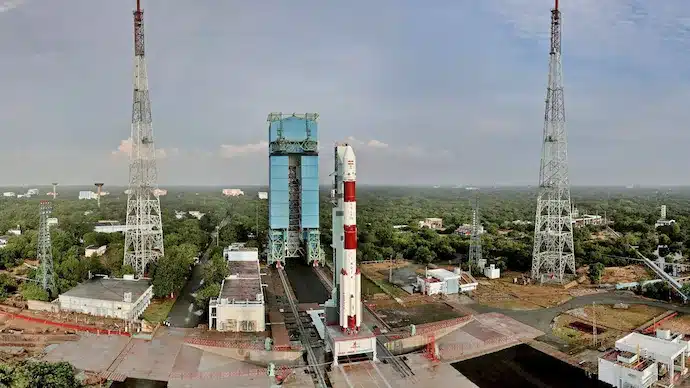India Approves Third Launch Pad for ISRO

The Indian government has taken a significant step in advancing its space exploration capabilities. The Union Cabinet, led by Prime Minister Narendra Modi, has approved the establishment of a Third Launch Pad (TLP) at the Satish Dhawan Space Centre in Sriharikota, Andhra Pradesh. This initiative aims to enhance the infrastructure necessary for India’s ambitious space missions, particularly the Next Generation Launch Vehicles (NGLV) and future human spaceflight endeavors.
Enhancing Launch Capacity for Future Missions
The Third Launch Pad project is designed to bolster India’s launch capacity significantly. Currently, the Indian Space Research Organisation (ISRO) relies on two launch pads: the First Launch Pad (FLP) and the Second Launch Pad (SLP). The FLP has been operational for over 30 years, supporting the Polar Satellite Launch Vehicle (PSLV) and the Small Satellite Launch Vehicle (SSLV). Meanwhile, the SLP has been in use for nearly 20 years, primarily for the Geosynchronous Satellite Launch Vehicle (GSLV) and the LVM3.
The new TLP will serve as a crucial addition to this infrastructure. It will not only support the NGLV but also act as a standby for the SLP. This redundancy is vital for ensuring that India can maintain a high frequency of launches, especially as it prepares for human spaceflight missions. The establishment of the TLP is expected to enhance the overall efficiency and reliability of India’s space launch capabilities, paving the way for more ambitious projects in the coming years.
Project Implementation and Timeline
The implementation strategy for the Third Launch Pad is designed to maximize industry participation. ISRO plans to leverage its extensive experience from previous launch pad constructions while sharing existing facilities at the launch complex. This collaborative approach aims to ensure that the TLP is built efficiently and effectively.
The project is targeted for completion within 48 months, or four years. This timeline reflects the urgency of enhancing India’s space launch capabilities in light of future missions. The TLP will feature a universal and adaptable configuration, allowing it to support not only the NGLV but also the LVM3 vehicles equipped with semi-cryogenic stages. This flexibility is crucial as ISRO looks to expand its launch options and meet the evolving demands of space exploration.
Financial Overview and Beneficiaries
The total estimated cost for establishing the Third Launch Pad is approximately Rs. 3,984.86 crore. This budget will cover the construction of the launch pad and associated facilities. The investment is seen as a critical step in boosting the Indian space ecosystem, enabling higher launch frequencies and enhancing the nation’s capacity for human spaceflight and space exploration missions.
The TLP is expected to benefit a wide range of stakeholders. It will not only support ISRO’s missions but also stimulate growth in the Indian aerospace industry. By increasing the frequency of launches, the project will create new opportunities for commercial missions and collaborations with international space agencies. This initiative aligns with India’s broader vision for its space program, which includes ambitious goals such as the Bharatiya Antariksh Station (BAS) by 2035 and an Indian Crewed Lunar Landing by 2040.
The Need for a Third Launch Pad
The decision to establish a Third Launch Pad stems from the evolving requirements of India’s space program. As the nation aims for more complex missions, including human spaceflight and lunar exploration, the existing launch infrastructure must be expanded. The current reliance on two launch pads is insufficient to meet the anticipated demand for heavier launch vehicles and advanced propulsion systems.
The TLP will play a vital role in addressing these challenges. It will enable ISRO to cater to a new generation of heavier launch vehicles, ensuring that India remains competitive in the global space arena. The establishment of the TLP is not just a response to current needs but a proactive measure to prepare for the future of space exploration in India.
Observer Voice is the one stop site for National, International news, Sports, Editor’s Choice, Art/culture contents, Quotes and much more. We also cover historical contents. Historical contents includes World History, Indian History, and what happened today. The website also covers Entertainment across the India and World.

